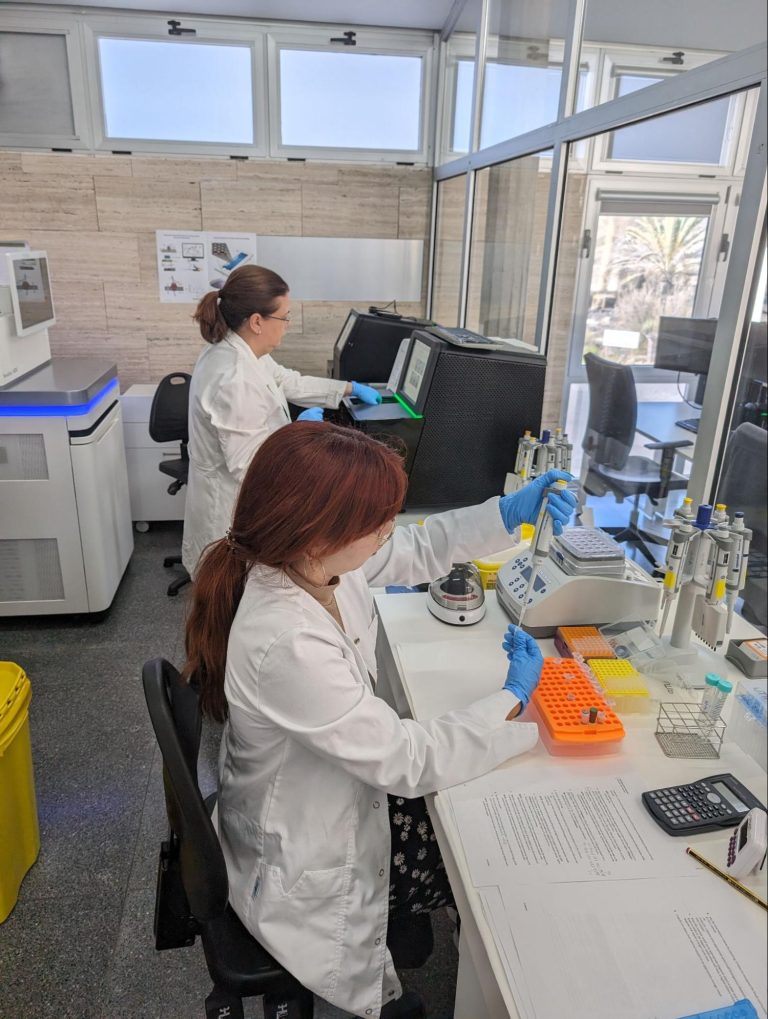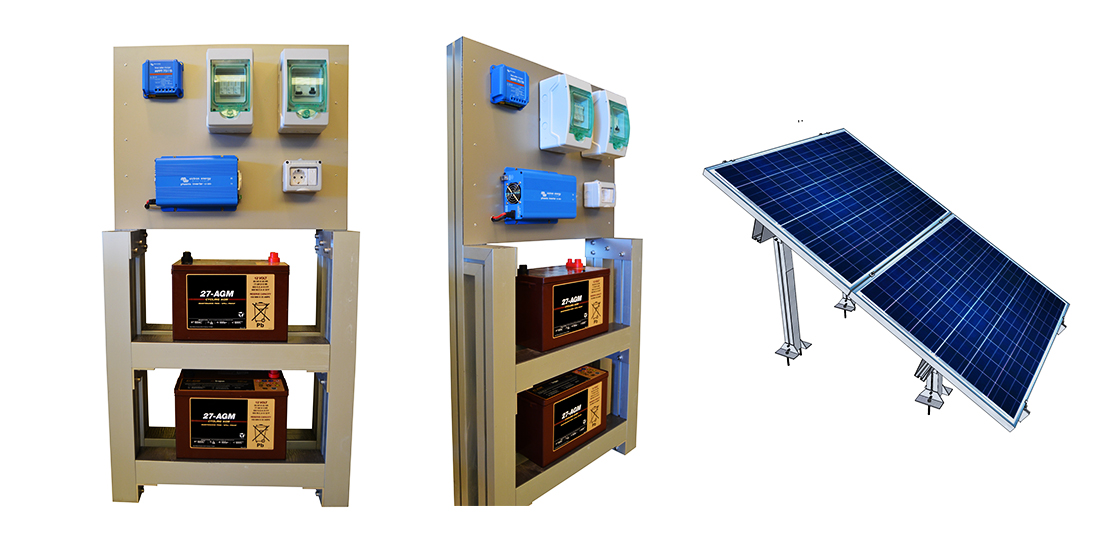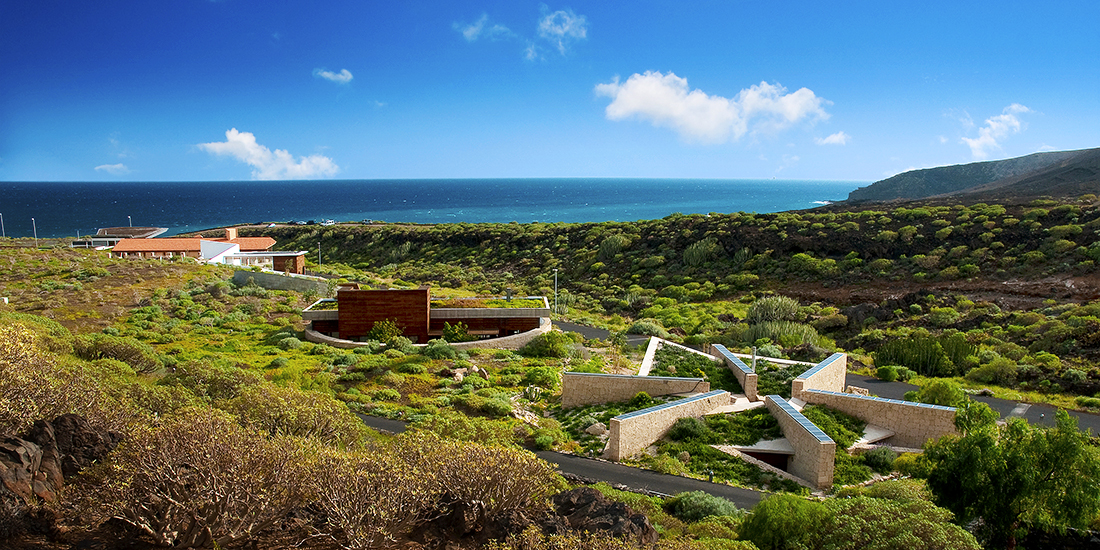The Institute of Technology and Telecommunications of Tenerife (IT3)
It is a neutral telecommunications operator created by the Instituto Tecnológico y de Energías Renovables (ITER) with the mission of promoting and developing the internal and external connectivity of the island of Tenerife through its participation in various local and international projects aimed at expanding and promoting the Information Society on the island of Tenerife and, by extension, in the rest of the Canary Islands archipelago.
IT3 is deploying a dark fibre ring: the Tenerife Island Telecommunications Ring (hereinafter AITT) over the road and rail infrastructure of the Island of Tenerife, open to all operators under an equal regime to promote competition.
In its initial phase, this ring will connect the metropolitan areas of Santa Cruz de Tenerife and San Cristóbal de La Laguna with the NAP, the landing point for numerous submarine telecommunications cables.
In subsequent phases, the ring will be completed around the Island of Tenerife and extended into its interior in order to provide connectivity and broadband access to each and every municipality on the island.
Description of the IT3 network
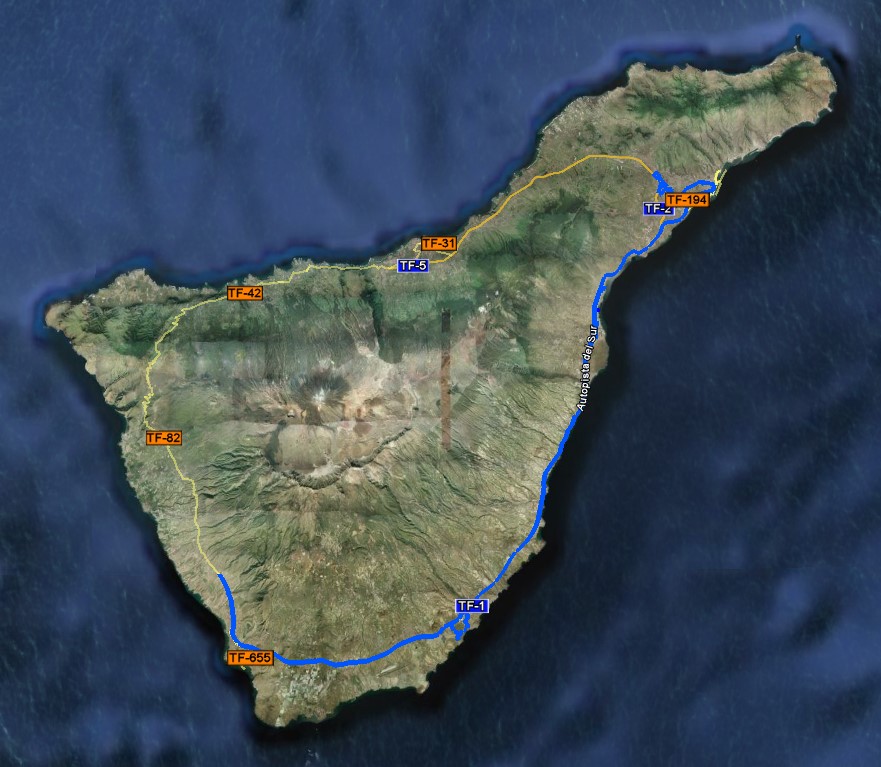
The electronic communications services network developed and operated by IT3 is a totally passive fibre optic network, intended to be rented as dark fibre optic. IT3‘s objective is to extend the fibre optic infrastructure throughout all the municipalities of Tenerife with the aim of extending and promoting the information society.
The IT3 network runs underground in both road and rail infrastructures in Tenerife. It is a ring network with a maximum capacity of 504 optical fibres and with all its sections redundant.
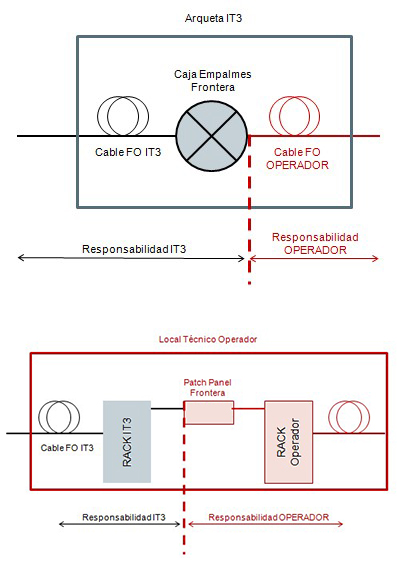
The component optical fibres are compatible with the technical requirements for the transmission of signals by third parties according to the following standards:
- General, backbone, and access sections: ITU-T G.652d.
- Special sections for submarine cable termination: ITU-T G.655c.
The attached diagram illustrates the position of the IT3 network within the overall network architecture of its clients, highlighting the interconnection points between both networks and the applicable responsibility boundaries.
Services
The services offered by IT3 to the wholesale telecommunications infrastructure market consist of making a specified number of fibre optic pairs along its network available to its clients as dark fibre.
The service can be contracted under a rental agreement or through the purchase of an Indefeasible Right of Use (IRU) of the fibre for a defined period. In both agreements, the service includes fibre maintenance in accordance with Service Level Agreements (SLAs) as detailed in the corresponding section.
Two distinct types of service are envisaged, each corresponding to a fibre optic type and a geographical area:
1. Transport Dark Fibre:
This service allows customers to have a physical fibre optic connection between two designated points, by connecting the different fibre optic sections that make up the IT3 network. This physical fibre optic connection is available to the customer so that he can establish the necessary connections and services by connecting the telecommunications equipment he deems appropriate.
This service is offered to electronic communications operators in general. Its geographical scope extends throughout the entire IT3 network.
2. Submarine Cable Terrestrial Termination:
This service enables operators who require it to establish a fibre optic connection between their submarine cable landing points (Beach Man Holes or BMHs) and their technical control and operation centers for those submarine systems.
This service is aimed at electronic communications operators who land their submarine cables at BMHs (Beach Man Holes) under the coverage of the IT3 network. Its geographical scope is therefore limited to the routes necessary to connect each BMH with its corresponding technical centre.
Transport Dark Fibre Service
The transport dark fibre service is defined as the establishment of a fibre optic transmission medium between two interconnection points. This transmission medium will consist of the physical connection (fusion splicing) of fibre optic sections along the IT3 network.
The delivery of the transport dark fibre service includes all the activities necessary to establish the physical connection by means of the fibre optic cable between the agreed interconnection points.
The client may use this transmission medium for the contracted period, connecting to it the telecommunications equipment necessary for this purpose. However, subletting or transferring to third parties all or part of the transmission medium or the various channels or wavelengths into which it may be decomposed is not permitted.
Submarine Cable Terrestrial Extension Service
The submarine cable terrestrial extension service is defined as the fibre optic connection between a submarine cable landing point and the technical center from which that cable is operated and monitored.
The delivery of the submarine cable terrestrial extension service includes all activities necessary to establish the physical fibre optic connection between the technical center and the cable landing point.
The client may use this transmission medium for the contracted period, connecting to it the telecommunications equipment necessary for this purpose. However, subletting or transferring to third parties all or part of the transmission medium or the various channels or wavelengths into which it may be decomposed is not permitted.
Service level commitment
Objectives
IT3‘s quality objectives for the provision of Transport Dark Fibre and Submarine Cable Extension services in point-to-point links, redundant or non-redundant, are defined within a commitment based on the following parameters:
- The quality, stability, and security of the various elements that comprise the infrastructure.
- The delivery lead time for links within the existing infrastructure.
- Mean time to repair.
- The execution of scheduled works.
The availability of the links.
IT3 manages the entire execution of the installation covered by this offer. Therefore, IT3 acts diligently in its execution, ensuring the supply, implementation, and successful completion of all aspects, under the terms and conditions described, providing these services directly or through subcontracting. Where applicable, the subcontractors selected by IT3 will be duly authorised and qualified to perform these functions, and under no circumstances will the Client bear any liability for this selection, non-performance, or negligent performance of the obligations assumed by IT3 and the subcontractors chosen by it.
Response times for initial service provisioning
For the services offered, and in relation to the study, contracting, and establishment of new services, IT3 commits to meeting the following timeframes:
- Feasibility Study: Time from receipt of the operator’s request until the feasibility of the requested sections is provided. Project execution times are excluded: ten (10) working days.
- Service Activation: Time from receipt of the operator’s service activation request until the service is installed and activated. Project execution times are excluded: twenty-two (22) working days.
- Service Availability: Total time the operator is guaranteed to have the service available and functioning correctly: 99.73% (8,616 hours).
Network maintenance
IT3 develops throughout its Network and up to the end of its responsibilities, either the distribution boxes where the service is delivered or the optical dispensers in the customer’s rooms, Corrective Maintenance and Preventive Maintenance services.
With regard to Corrective Maintenance, the SLA’s (Service Level Agreements) that must be taken into account to carry out repairs to faults are determined, as well as the procedure for reporting incidents and their processing.
- Corrective Maintenance: All those activities related to the resolution, either definitive or palliative, of an incident detected by IT3 or by its clients. In the event that it is IT3 who first detects it and reacts accordingly before the customer detects it, the Corrective Maintenance applied will be ‘Proactive’. In case it is the customer who first detects the failure and reports it to IT3 for resolution, the Corrective Maintenance applied will be ‘Reactive’. In general, all activities in this group may be proactive or reactive, depending on the actor identifying the incident.
- Preventive Maintenance: All those activities that are applied to prevent incidents from occurring. In other words, activities that are focused on preventing a network incident. With the idea that customers are always warned of any Preventive Maintenance activity that IT3 may carry out, whenever there is a risk that the service may be affected, before the execution of any of these operations, a notification will be sent, in the form of Scheduled Work, in which the affected customer or customers will define the time at which this cut will affect their service the least.
Links of interest:



